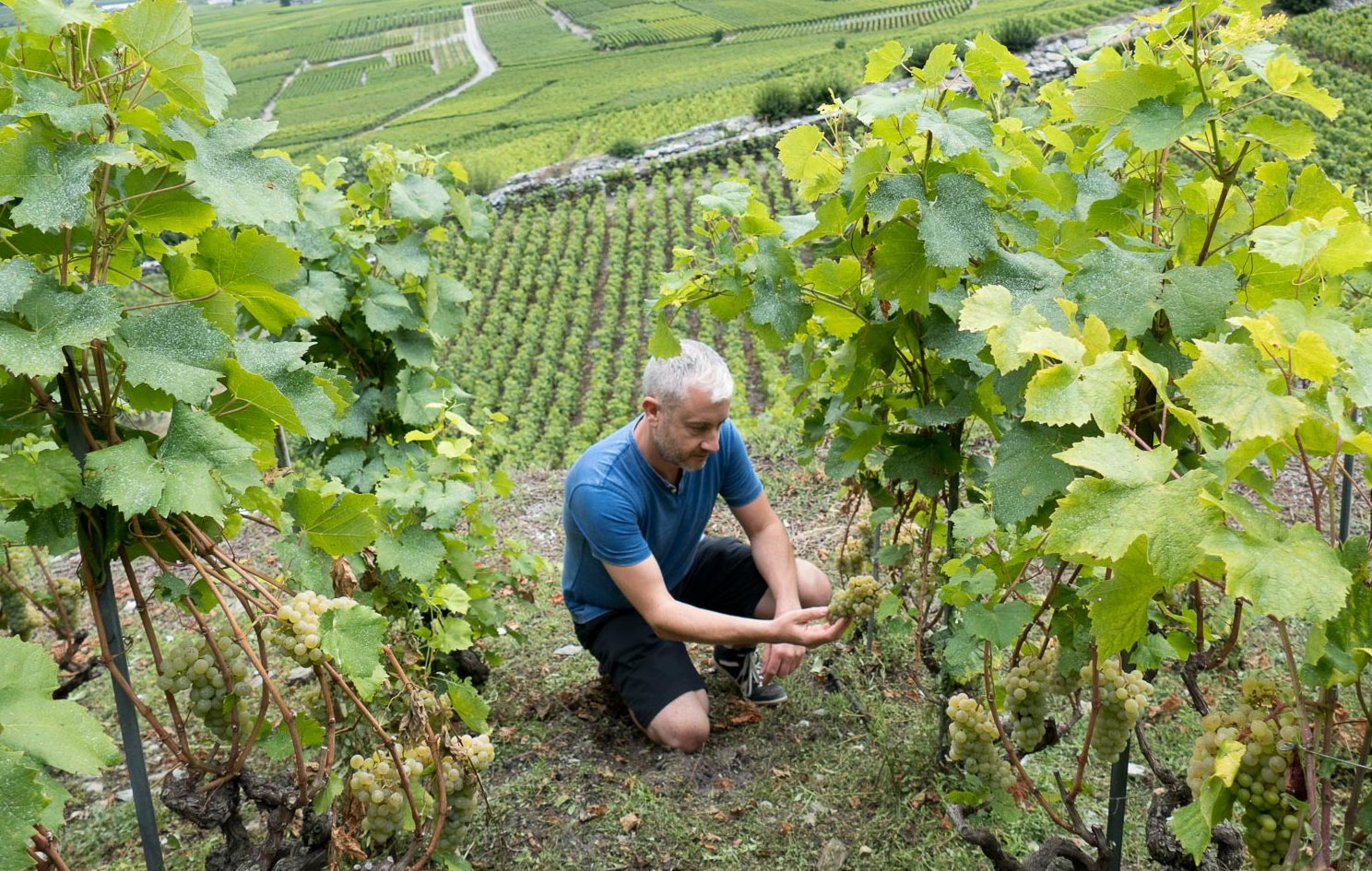Kermode discovers a wide range of exciting indigenous Swiss varietals at VINEA with many wines that deserve wider international recognition.
For a country so small, Switzerland punches well above its weight. From exceptional design, incredible infrastructure, to some of the world’s most sophisticated engineering, this small confederation of cantons is about so much more than tax dodging and the Toblerone.
Yet one thing doesn’t generally spring to mind: wine.
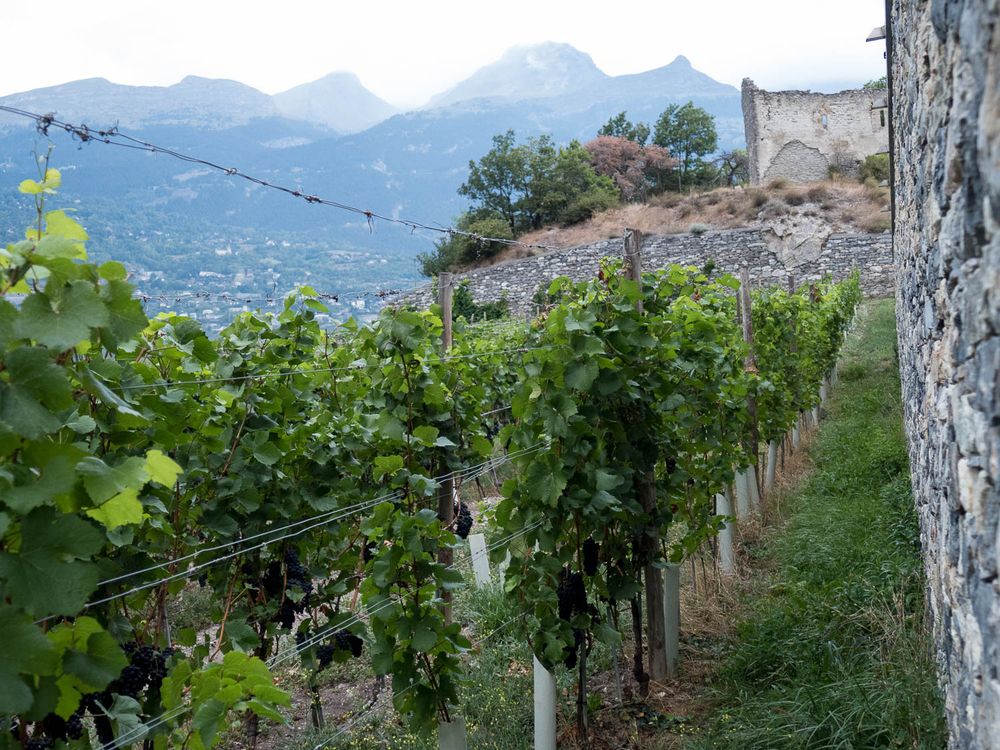
Switzerland is home to an incredible 252 grape varieties, many indigenous, some on the verge of extinction, supplemented by an astonishing array of precision-engineered crossings specifically designed to defy the odds in the country’s vertiginous vineyards. There are styles of wine to satisfy most palates, yet if you asked a typical international drinker about their experience of Swiss wine you probably wouldn’t get much further than a brief flirtation with Fendant.
One simple fact explains this: the Swiss drink 99 per cent of their output, leaving a minuscule amount for export. Then there’s the price: with labour costs up to five times higher than Bordeaux, the wines don’t come cheap. Oddly, Switzerland also lacks a serious top end to its market, with most wines sitting in the 18-80 CHF (£15-£65) bracket, meaning they don’t spike the interest of the super-rich. And finally, there’s the recognition factor, with those native grapes and crossings unfamiliar to most of us. How about a Humagne Rouge? Who’s for a glass of Garanoir?
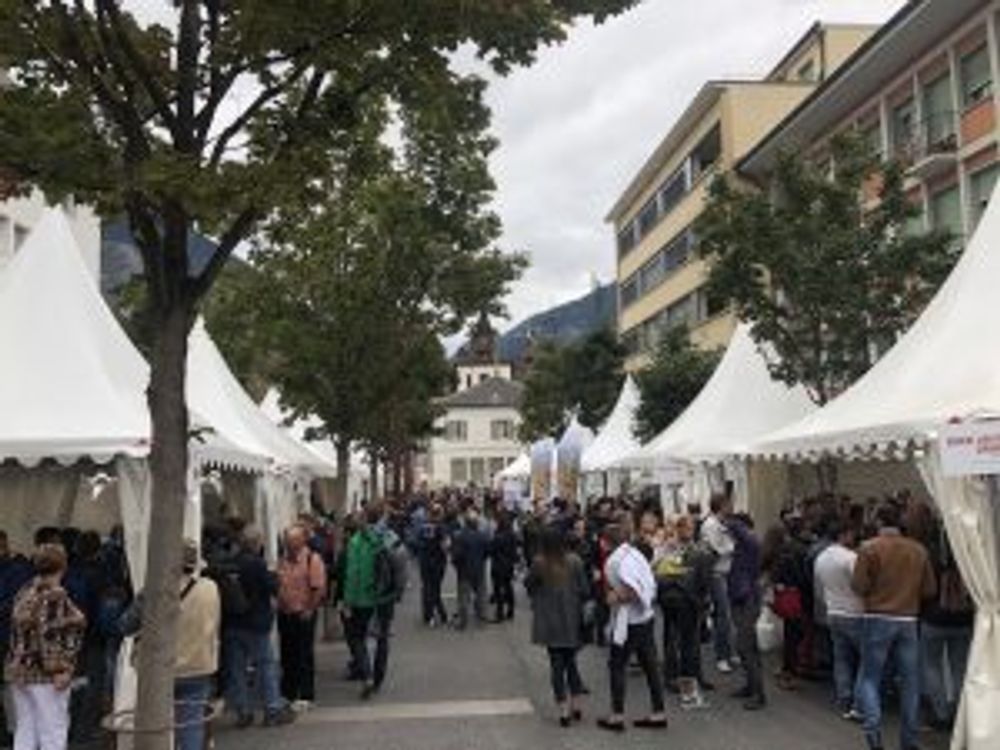
The VINEA wine show, September, 2018
Undeterred, Swiss producers are determined to change all that, with a goal of increasing exports to drive greater recognition of the country’s wines. VINEA represents those producers and although its ‘Salon’ showcase in Sierre was squarely aimed at enthusiastic domestic drinkers, of which there were many, there was much talk of the wider wine world.
Switzerland has 15,000 hectares under wine, across six regions, with the Valais accounting for a third of all production and the vast majority of wines on show. Many vines grow on historic stone terraces that rise hundreds of metres, resembling viticultural battlements. The country boasts a significant proportion of the world’s UNESCO-protected vineyards.
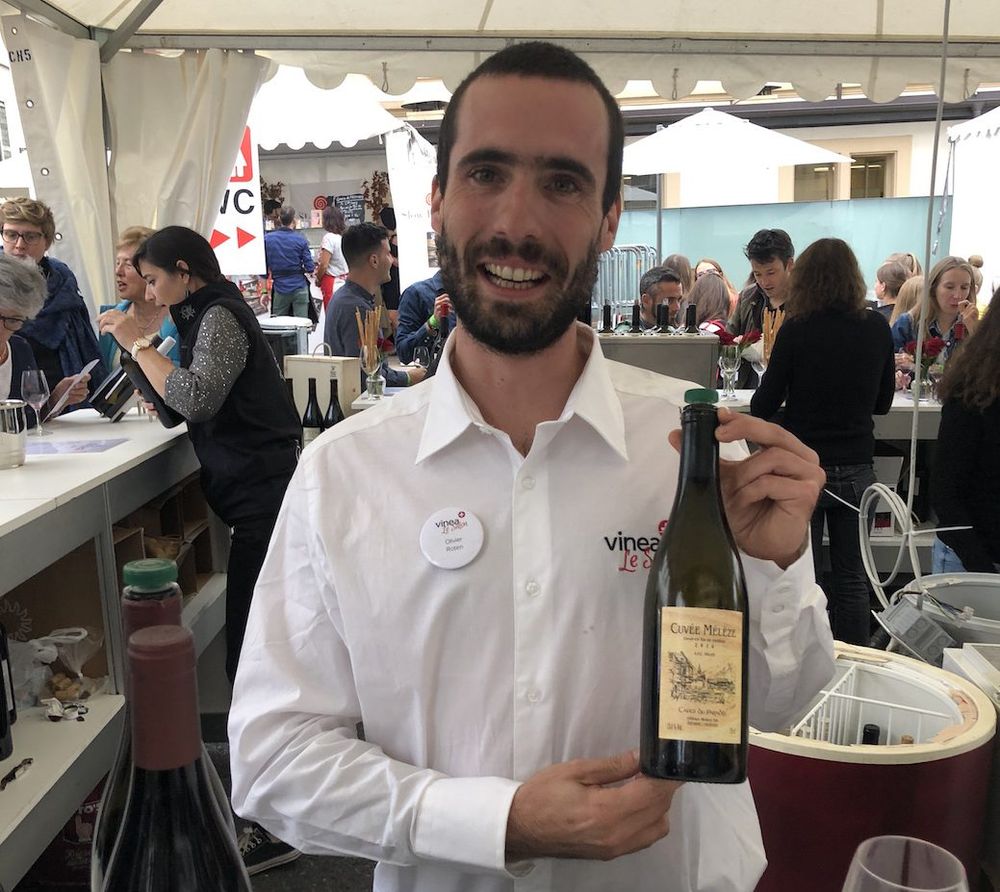
Olivier Roten from Caves du Paradis
“There has been such an improvement in the quality of Swiss wines”, Olivier Roten at Caves du Paradis told me, “and much of that is thanks to competition from other countries. Now we must show the world what we have here. The future of Swiss wine is to export, but we need more help from our Government.”
Roten’s wines range from the more familiar, including a deliciously wild Syrah and an elegant, lightly savoury old-vine Pinot Noir, to some of Switzerland’s traditional mountain vines, like Heida (or Païen, if you’re a French speaker), which has a charming nose of light citrus and delicate meadow flowers that belies its firm acidic structure. Then there’s his own take on traditional Valais winemaking, with the delicious Cuvée Mélèze 2016 an equal blend of two more historic Swiss varieties, Humagne Blanche and Petite Arvine, aged for 11 months in barrels made from larch. This imparts a distinctive mountain note to the wine that must require expert handling to avoid something resembling a pine-scented cleaner.

Chasselas grapes
Petite Arvine actually emerged as one of my personal favourites at the tasting, repeatedly proving itself superior to the more widely-planted Chasselas, also known in the Valais as Fendant, which generally boasts an attractive, delicate citrus nose and a pleasing spritz, sometimes with salinity, but almost never discernible acidity.
By comparison, Petite Arvine Tradition 2017, from Domaine des Muses, imported to the UK by Alpine Wines, has a beguiling nose of mango, melon and clementine, with robust, bright acidity and a saline twist on the finish that reminded me of Verdejo. Another excellent example comes from Bonvin, in nearby Sion, whose Noble Cépages Petite Arvine 2017 combines generous citrus and tropical fruits, tension and a sense of minerality.
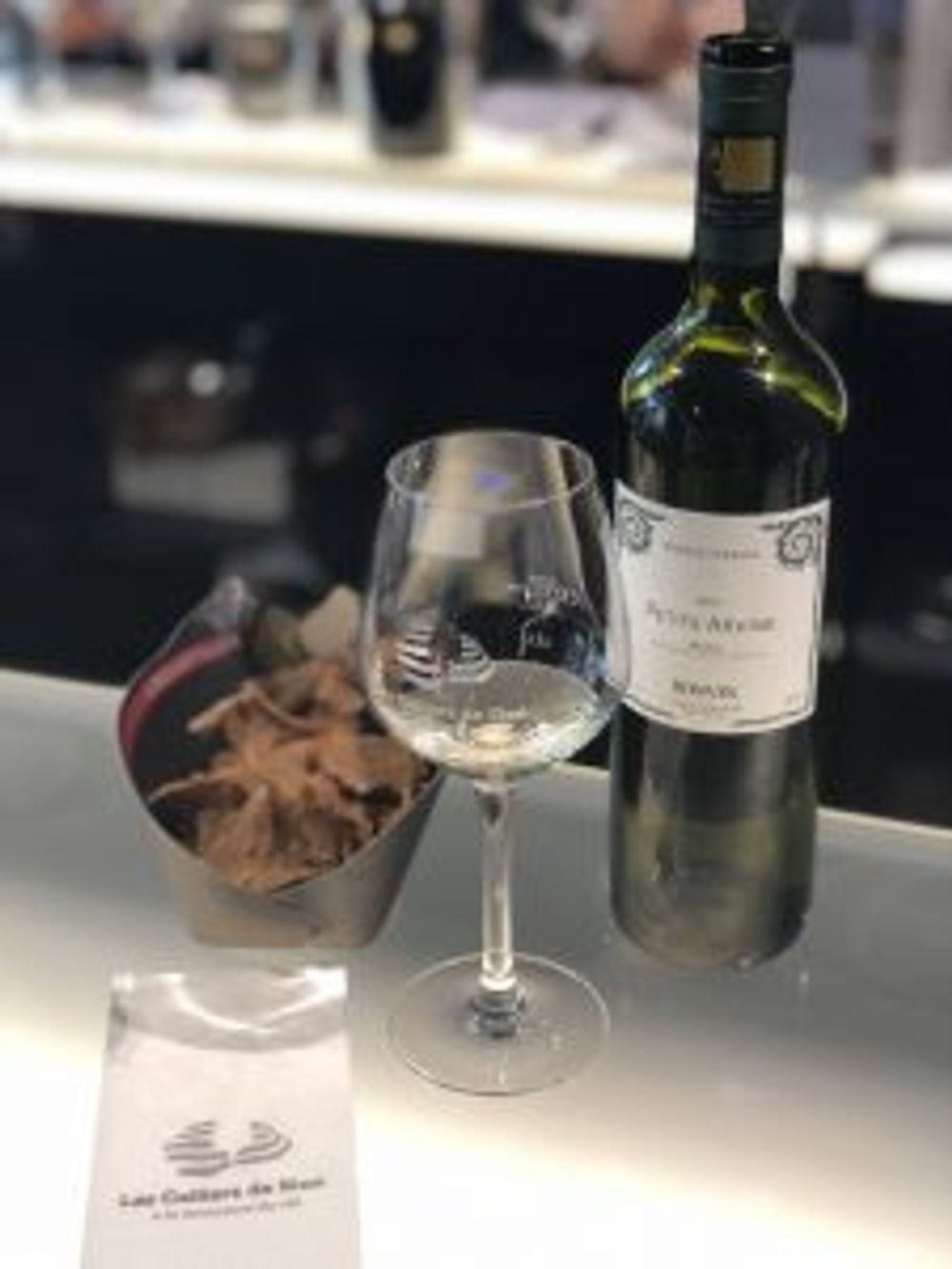
Grape geneticist Dr José Vouillamoz, Switzerland’s leading authority on its indigenous varieties, worked alongside Jancis Robinson and Julia Harding on the incomparable ‘Wine Grapes’, which must have been as back-breaking to write as it is to carry. He tells us: “The best examples of Petite Arvine rank among the best white wines in the world. This should be the flagship of the Valais.”
He introduces us to another ancient treasure: Rèze. First mentioned in 1313, there are just 2.5 hectares left in Switzerland. It’s a shame, as the Cave Les Sentes 2017 Rèze has precision and charm, with bright grapefruit, juicy green apple, firm acidity and length.
Sixty per cent of Switzerland’s wines are red, dominated by Pinot Noir. Some of the clonal selections might misfire slightly in the mountains, but the best wines undoubtedly give Burgundy a run for its money, at a relative fraction of the price. Gregor Kuonen produces an unfiltered Pinot Noir using gentle movement to achieve a wine that has a light, violet-perfumed elegance and a distinct summer meadow charm. I love Cabernet Franc, so I enjoyed Kuonen’s Grandmaître Barrique 2016, brooding with dry herbs, dark chocolate, gentle spice and just a slight tannic chew. Both wines are also imported by Bradford-based Alpine Wines.

One of the more popular reds with Swiss consumers is the veteran Pinot Noir Aigle Les Murailles Rouge 2017, which offers ripe, sour cherry, light tannins and just enough acidity to provide a pleasing spine to the wine.

Alongside the international varieties, there are some interesting crossings – including Gamaret, a mix of Gamay and the white Reichensteiner (itself a crossing) – and indigenous varieties like Cornalin, also known as Rouge du Pays (do keep up), that taste enticingly different. Cave des Bouquetins‘ Cornalin 2016 has a beautiful dark plum and cherry stone character with lovely acidic structure, perfect for the venison you might reasonably expect to find on your Alpine supper plate.
Reflecting on my tasting notes, it’s clear that Switzerland’s somewhat confusing selection of wine varieties deserves a bigger place in my consciousness than I had ever realised; there’s no denying that anyone enthusiastic about tasting something new can have a field day in the mountains; there’s vibrancy, if not always acidity, with the wines, more often than not, speaking of their surroundings. They’re not cheap, but neither are they especially expensive.
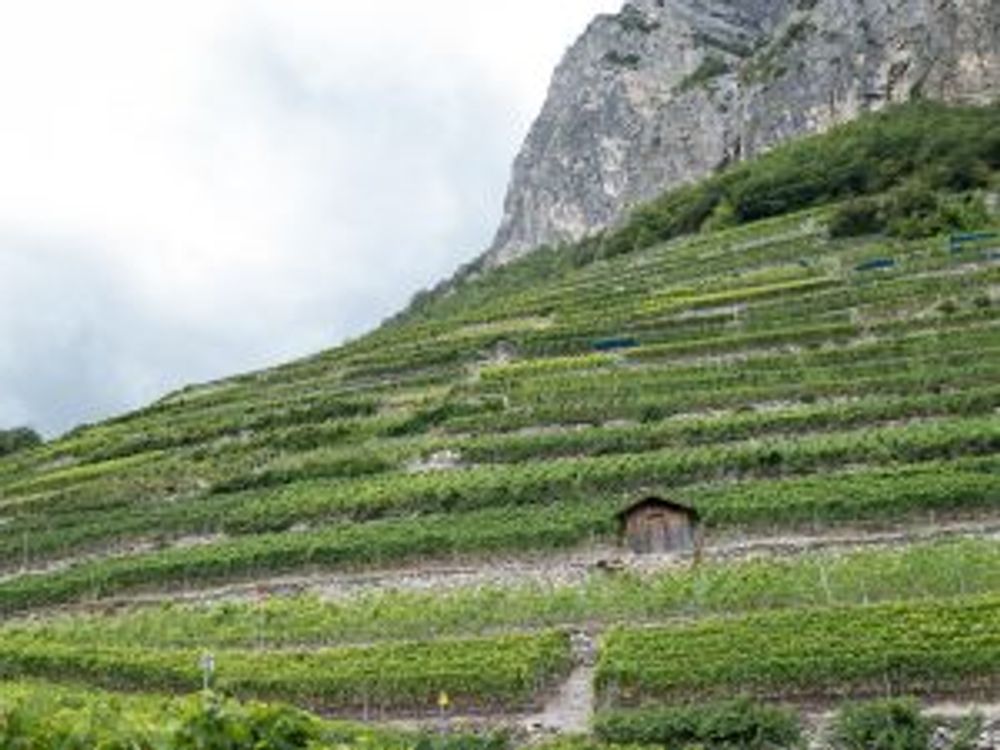
At the very least, it has to be worth more than that minuscule single per cent that currently reaches the rest of us.
David Kermode is a wine presenter, broadcaster and writer with his own website vinosaurus.co.uk
